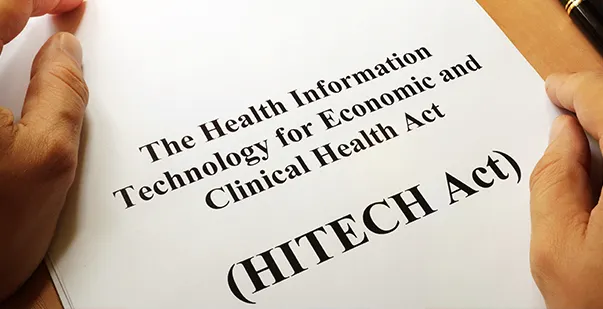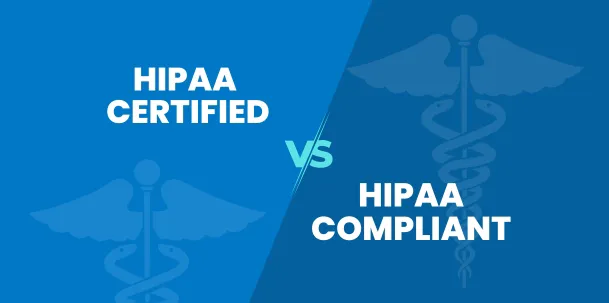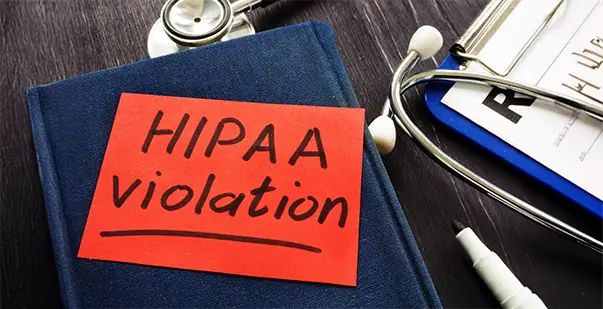Are your medical records protected? Do you ever wonder who can access your own medical info when you go to see a healthcare provider? The risk is real, as shown by the major Anthem hack, which affected 79 million patients and led to a $16 million settlement with regulators.
HIPAA violations are real breaches of patient privacy that can seriously impact both healthcare providers and patients. These are filed when protected health information is mishandled, shared without permission, or not stored correctly. HIPAA regulations ensure that individuals’ health information remains private and secure
Keep reading to find important information about HIPAA violations. You can learn everything, from the identification of typical HIPAA violations examples to knowing the right channels for reporting.
What Is a HIPAA Violation?
HIPAA (Health Insurance Portability and Accountability Act) violations occur when healthcare organizations, insurance companies, or their business associates fail to follow established guidelines. These guidelines are designed to protect the security and privacy of patient data. A violation can occur when protected health information is accessed, shared, or transmitted without proper authorization.
The HIPAA Journal’s February 2025 healthcare data breach report noted a 36% drop in recorded breaches compared to the previous month, with only 46 large-scale incidents. These violations can result in steep penalties. According to the ADA article, fines may start at $100 per occurrence and go up to $50,000. For repeated offenses under the same section, the total penalty can reach up to $1.5 million, as outlined in the HIPAA Enforcement Rule.
Read More: What is the HITECH Act?
What Are The Major HIPAA Violations?
According to a study by Md Mahbub Hossain et al., from 2010 to 2018 alone, 2,529 breaches impacted over 194 million individual records, with 72.08% involving healthcare providers. The leading causes were theft (32.94%) and hacking (22.7%), showing how serious and frequent these violations have become. Below are the most common types with examples of HIPAA violations, clearly defined to help identify and avoid them.
1. Improper Access or Disclosure of PHI
Unauthorized access or disclosure of Protected Health Information (PHI) accounts for 34% of healthcare data breaches. The violation results from unauthorized viewing, access, or disclosure of PHI without approval or for an unauthorized medical purpose.
Examples:
An employee inquiring about the information in a patient's record out of curiosity.
Sending someone else's medical records by mistake.
Discussing a patient's status where others will overhear it.
Why it matters:
Inadvertent unauthorized disclosures can lead to significant legal exposures and loss of patient trust. These activities are among the most commonly reported HIPAA violations.
2. Inadequate Data Encryption
According to an IBM report, data stored in public clouds without proper safeguards resulted in the highest average breach costs of around $5.17 million per incident. This highlights how expensive unprotected data can be. Although it is optional, but highly recommended by HIPAA as a best practice for safeguarding electronic PHI, particularly on mobile devices.
Examples:
Leaving patient data in unencrypted form on laptops, USB flash drives, or cell phones.
Sending sensitive data via unencrypted email or networks.
Why it matters:
When an unencrypted device is stolen or lost, it can technically be a breach, even if lost accidentally. Encryption can help protect against unauthorized use in such an event.
3. Inadequate Employee Training
Not training employees in HIPAA privacy and security regulations results in mismanagement of PHI, most commonly by accident.
Examples:
Discarding medical records that are discarded in regular trash rather than being shredded.
Having private phones or unencrypted software for communication with patients.
Sending phishing emails compromising sensitive information.
Why it matters:
Staff are the first line of defense when protecting patient information. Without continuous learning, well-intentioned staff can create serious compliance violations.
4. Not Performing a Risk Assessment
HIPAA mandates covered entities and business associates to continually evaluate risks to the security of ePHI and apply necessary safeguards.
Examples:
Why it matters:
Outdated or missing risk assessment is a grave compliance failure. In a breach, one of the initial places regulators look for in an investigation is here.
5. Insufficient Business Associate Agreements (BAAs)
A signed contract prior to releasing PHI to third-party services or vendors, also Business Associates, must be done as required by HIPAA.
Examples:
Why it matters:
Without a legitimate BAA, both the business associate and the covered entity are exposed to liability in the event of a breach. It's a legal protection that guarantees reciprocal compliance requirements.
6. Improper Disposal of PHI
HIPAA mandates that physical and electronic forms of PHI be disposed of securely after they are no longer necessary.
Examples:
Throwing paper clinical records in regular trash bins, instead of shredding machines.
Selling or disposing of computers, hard drives, or storage media without deleting the data.
Destroying old records with PHI without properly erasing all sensitive information.
Why it matters:
An unencrypted document or hard drive thrown away can be easily obtained by an unauthorized person who now has entry into both the patients and the organization. Safe disposal methods have to be applied by organizations so they can be compliant with HIPAA and also stay away from issues.
7. Timely Breach Notification
Healthcare organizations covered by HIPAA are required to notify affected individuals and the U.S. Department of Health & Human Services (HHS) within 60 days of learning of a breach of unsecured PHI. Failure to notify or delayed notification can have severe legal and financial consequences.
Examples:
Why it matters:
Delay in notification breaches patient and regulatory trust. Not only is it a HIPAA violation, but it also increases the risk of exposure even more and the chances of liability.
Read More: Assisted Living Facilities and HIPAA: Avoiding Costly Mistakes
How to Report HIPAA Violations
Healthcare data is a prime target for identity theft. That’s why reporting HIPAA violations is required. If you witness or suspect a violation, knowing how and where to report it is critical for preventing further harm. Follow the steps given below to report a HIPAA violation:
Start with Internal Reporting
If you suspect a HIPAA violation, the first step is to report it within your healthcare organization. Most providers and covered entities have a privacy officer designated and internal reporting procedures for issues. Report first through the internal channels; sometimes, reporting timely can result in remedial action taken promptly and prevent the matter from escalating.
Refer to the Office for Civil Rights (OCR)
If your issue isn't fixed by the internal complaint process or if the breakdown is serious, you can complain to the Office for Civil Rights (OCR) in the Department of Health and Human Services. You can file your report on the OCR complaint website, by mail, email, or fax.
Provide Required Details
When complaining, be ready to give substantial facts. You have to reports who authorized the breach, what exact data was concerned, when the breach occurred, and to whom the unauthorized information could have been released.
Review OCR complaint and Enforcement
The OCR fully reviews all valid complaints. The HHS OCR is responsible for enforcing HIPAA regulations and fully examines all valid complaints.
According to the Tricerat 2024 report, in 2023 alone, the OCR enforced over 353,000 complaints, collecting civil penalties and settlements of around $142.53 million. This shows the seriousness with which the OCR handles HIPAA breaches.
Read More: Why is Compliance and Safety Critical in Healthcare?
Protect Your Electronic Health Record With Righ Training!
HIPAA violations are both legal infractions and violations of trust between patient and physician. Being able to explain to one what defines a HIPAA breach, identify classic examples, and understand proper reporting processes is a required skill for all employees within health care environments. Unwavering vigilance in maintaining patients' confidentiality and quick action in reporting suspected breaches keep the health care system healthy.
Online HIPAA awareness training offers extensive training in achieving HIPAA compliance requirements successfully. This course becomes helpful in using practical approaches of successful strategies without disrupting effective healthcare operations.
References:
https://sprinto.com/blog/examples-of-hipaa-violations/
https://www.hipaajournal.com/what-is-a-hipaa-violation/
https://www.strongdm.com/blog/hipaa-violation-examples
https://www.metricstream.com/learn/hipaa-risk-assessment.html
https://www.ama-assn.org/practice-management/hipaa/hipaa-violations-enforcement










